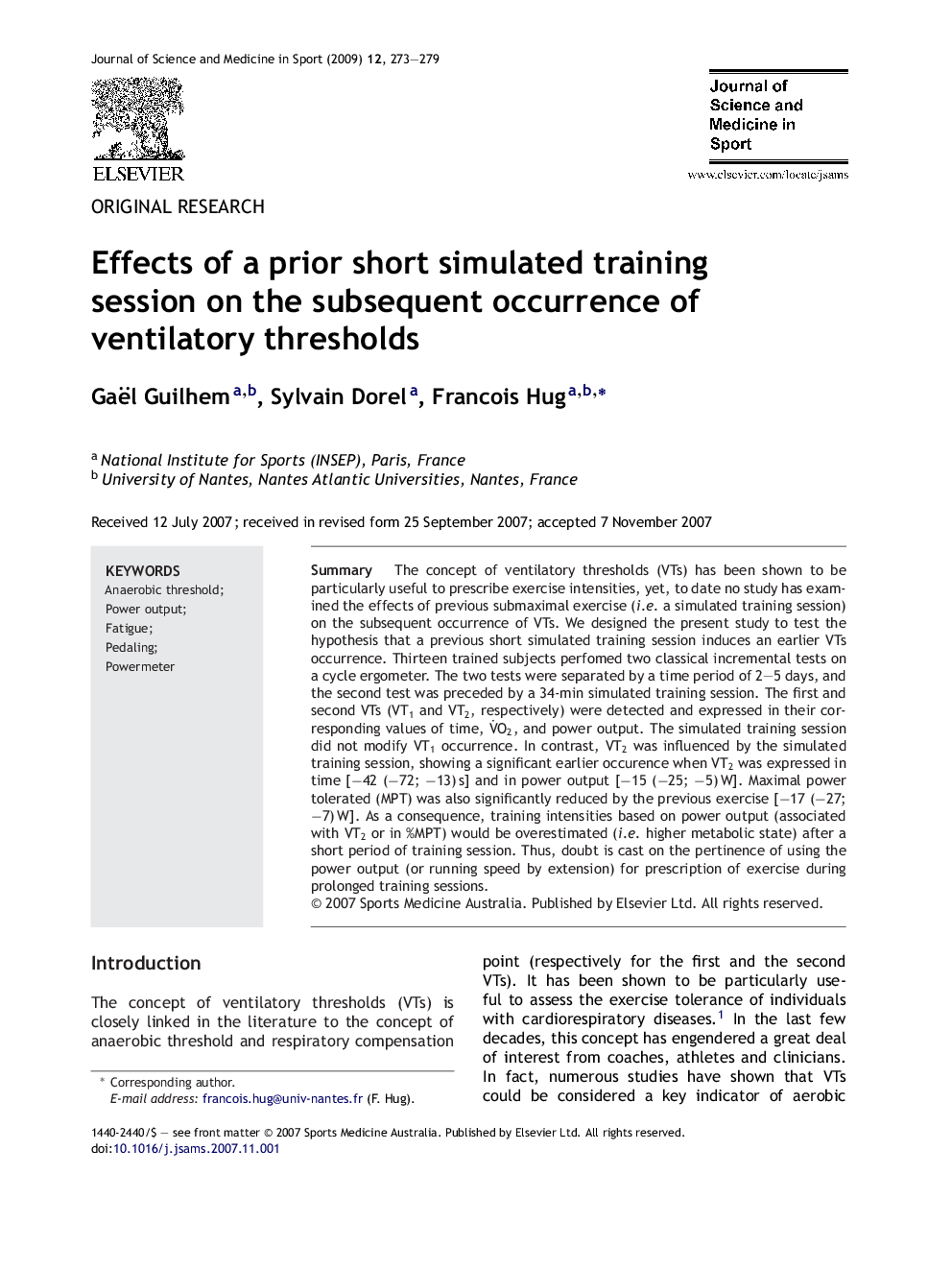| Article ID | Journal | Published Year | Pages | File Type |
|---|---|---|---|---|
| 2703272 | Journal of Science and Medicine in Sport | 2009 | 7 Pages |
SummaryThe concept of ventilatory thresholds (VTs) has been shown to be particularly useful to prescribe exercise intensities, yet, to date no study has examined the effects of previous submaximal exercise (i.e. a simulated training session) on the subsequent occurrence of VTs. We designed the present study to test the hypothesis that a previous short simulated training session induces an earlier VTs occurrence. Thirteen trained subjects perfomed two classical incremental tests on a cycle ergometer. The two tests were separated by a time period of 2–5 days, and the second test was preceded by a 34-min simulated training session. The first and second VTs (VT1 and VT2, respectively) were detected and expressed in their corresponding values of time, V˙O2, and power output. The simulated training session did not modify VT1 occurrence. In contrast, VT2 was influenced by the simulated training session, showing a significant earlier occurence when VT2 was expressed in time [−42 (−72; −13) s] and in power output [−15 (−25; −5) W]. Maximal power tolerated (MPT) was also significantly reduced by the previous exercise [−17 (−27; −7) W]. As a consequence, training intensities based on power output (associated with VT2 or in %MPT) would be overestimated (i.e. higher metabolic state) after a short period of training session. Thus, doubt is cast on the pertinence of using the power output (or running speed by extension) for prescription of exercise during prolonged training sessions.
